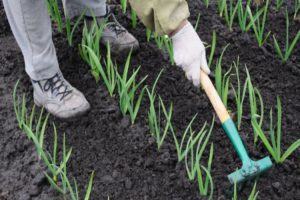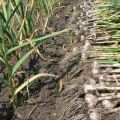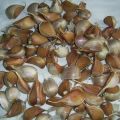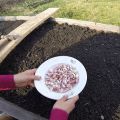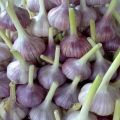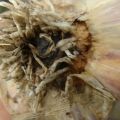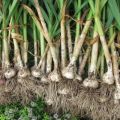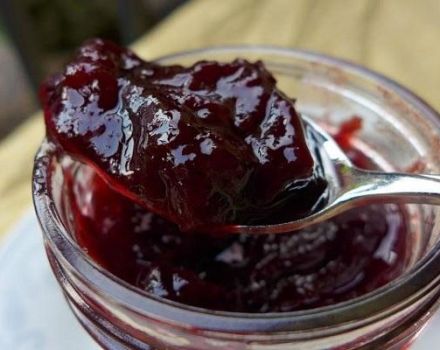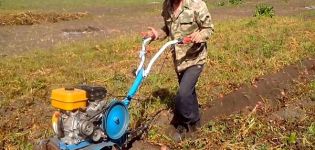The reasons why garlic turns yellow in the garden and what to do?
Growing vegetables is not easy, so helpful advice from experienced gardeners will always come in handy. Among the frequent problems in the cultivation of vegetable crops, the yellowness of garlic is also distinguished. Why does garlic turn yellow? There seems to be no particular reason for the feather to turn yellow, but a vegetable patch turns from green to yellow in spring or in mid-summer, in July. Usually the stems dry before harvesting the garlic heads. It is clear that yellowing ahead of time will stop the growth of the bulbs.
Yellowing of garlic is caused by frost
Although garlic is not afraid of frost, withstanding a short-term drop in temperature to minus three degrees, it begins to turn yellow with a prolonged cold snap.
Sharp temperature changes between day and night are common in temperate regions, and what to do if the tips of the leaves turn yellow in garlic. Given the change in weather, you can cover the plant bed with plastic wrap at night.
Winter garlic species sprout in the spring and immediately turn yellow and wilted leaves. This is due to the wrong timing of planting crops in the winter. Early planting will lead to the emergence of seedlings in the fall and their freezing during frost. It is important to pay attention to the gardener's calendar to determine the timing of planting for a particular year. In the middle lane, a culture is planted in the second or third decade of October, in warm regions - two weeks later.
Garlic turns yellow, not sure what to do? Spraying a growth stimulator with Zircon will help speed up the formation of young leaves in spring.
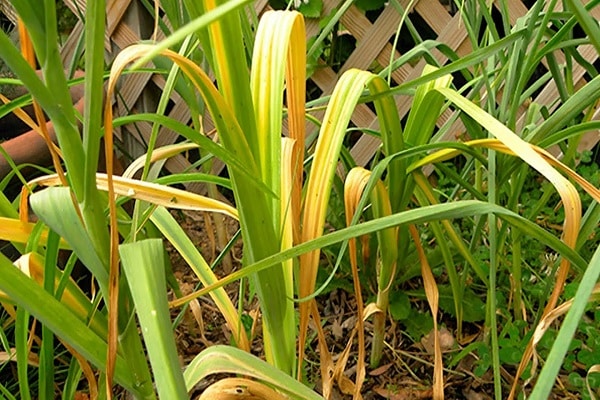
Excess or lack of moisture
The conditions for growing garlic include the composition of the soil, the level of its moisture. The vegetable does not like too moist soil. Therefore, they choose a site with deep groundwater.
If the leaves of garlic turn yellow during the wet summer, then this indicates oxygen starvation of the plant roots. Over-saturation of soil moisture leads to the appearance of a dense crust on top of the bed. The situation can be corrected by loosening the earth, loosening the stem with shoveling the earth from the bulb. To prevent the stems and roots from getting wet, it is better to grow the crop on high ridges.
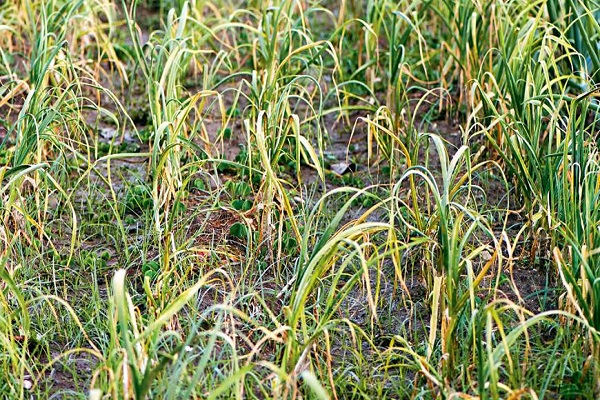
During the dry season, the plant may lack moisture. Therefore, water your beds every week. In addition to water, when garlic turns yellow, what to water with in a drought? Choose nutrient solutions with growth promoters. If there is a threat of frost, then spill the vegetable more often. This way, the leaves will begin to renew themselves faster, and the vegetable plant will continue growing.
Diseases and pests of garlic, as the cause of feather yellowing
A feature of the garden culture is the odor repelling of garden pests. But when the soil is infected with fungi and larvae, it is difficult to save the plant from diseases. And the first symptoms of unhealthy culture in the yellowing of leaves, stems, the appearance of brown spots on them. A diseased plant is not able to develop further, begins to dry out and dies.
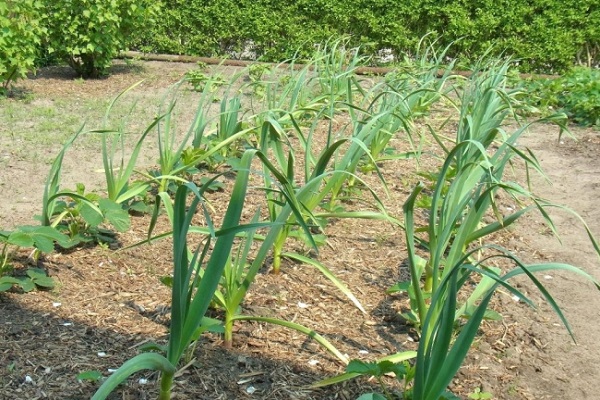
You can establish the reason why the garlic turns yellow in the garden, and what to do in this case, by examining the bulb, the stem of the plant. Even with visual inspection, the source of the problem is found:
- Rot that appears on the head of a vegetable is a symptom of fungal diseases: rot, rust. Infection with a fungal infection goes through the soil or seed. The disease, as it progresses, leads to rotting of the bulb and yellowing of the leaves. When the first signs appear, the planting of the vegetable is treated with the Quadris preparation. The procedure is carried out three times in two weeks.
- Onion fly mold is also found on the bulbs. The larvae of the pest penetrate into the stem, eating it. And pathogenic microorganisms colonize the damaged areas, finishing off the plants.
- If yellow stripes appear on the tips of the leaves, and the stem is covered with brown strokes, then the vegetable is sick with fusarium. You can cope with the first signs of infection by processing Fitosporin-M.
- During the wet summer, the leaves of the plant turn yellow, and on the underside they are covered with a white bloom. It was powdery mildew fungi that affected the vegetable. They fight microorganisms by spraying with preparations containing copper.
- Stem onion nematode is dangerous for vegetable crops. Feeding on the sap of the plant, the larvae of the parasite lead to yellowing of the garlic, stopping its development. The leaves of the vegetable dry up, curl, and the head rots. The eggs of the pest settle in the bottom of the bulb, and the worms migrate, affecting neighboring plants.
- If it starts up in the garden onion flythen it will be detected visually. Small flies of light gray color fly around the feathers of garlic. The fly larvae are harmful, which, having made their way into the onion, eat it. You can determine the defeat of the vegetable by the mold on the roots. Creolin or naphthalene is used to scare off flies.
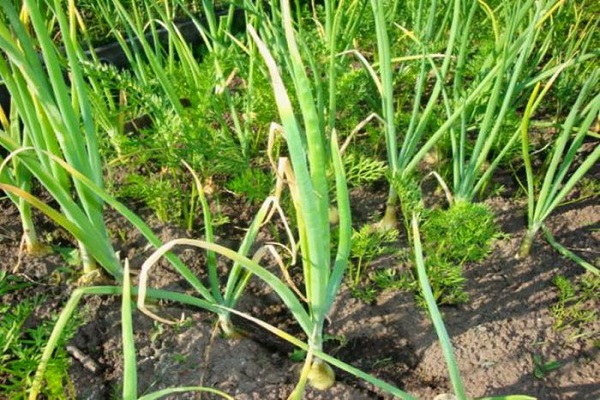
As soon as the yellowing of the leaves begins for no reason, it is necessary to carefully examine all parts of the plant in order to identify a disease or pest.
How to prevent the disease?
Of the measures for the prevention of diseases of vegetable crops, experienced gardeners offer:

- Do not plant garlic in the same place.
- Before planting a vegetable plant, the garden is spilled with a solution of potassium permanganate. The planting material is also soaked in it for twelve hours. Then washed and dried.
- The soil in greenhouses requires special attention. It must be replaced and disinfected annually.
- You need to know how to feed your culture. If the garlic turns yellow, then the pests of the greenhouse can lead to a lag in its growth and vegetation. It is necessary to constantly monitor the condition of the soil in the room, disinfect it, and regularly change it.
Mint and calendula are planted next to the garlic, whose roots secrete special substances. They are poisonous to fungi and flying insects.... And the onion fly is deterred by planting carrots. Get rid of the parasite by spilling the soil with saline.
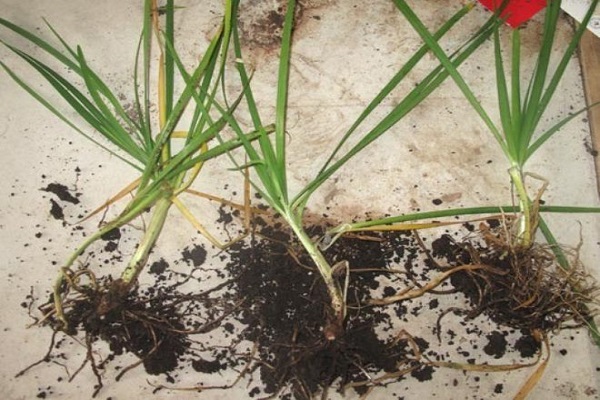
Lack of nitrogen and other trace elements
For a full-fledged growing season, garlic needs nitrogen, to a lesser extent potassium and phosphorus. When there are not enough elements in the soil, the leaves begin to turn yellow.
A single feeding with nitrogen will lead to the restoration of the vegetable plant. The procedure is repeated two weeks later.
If the leaves turn yellow, what is the best way to feed the garlic? Of the fertilizers containing nitrogen, urea is chosen. She is watered the emerging seedlings of three liters per square meter. One tablespoon of urea is enough for a bucket of water.
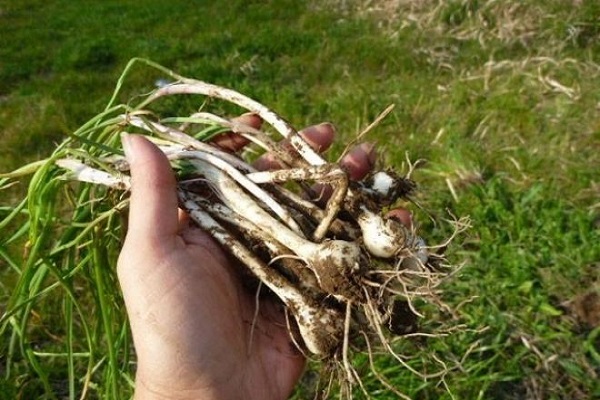
For dry feeding during wet weather, carbamide is embedded in the grooves along the rows of the vegetable.Two grams of substance are enough per square meter.
With timely fertilization, yellowing of the feather can be avoided.
Micronutrient deficiencies will also affect other crops that grow near garlic. Phosphorus reserves in the soil in July are replenished with wood ash. Garlic is enriched with other microelements using complex substrates Agricola, Kemiru. Fertilizers are applied either dry before digging a site, or with a solution, watering the seedlings.
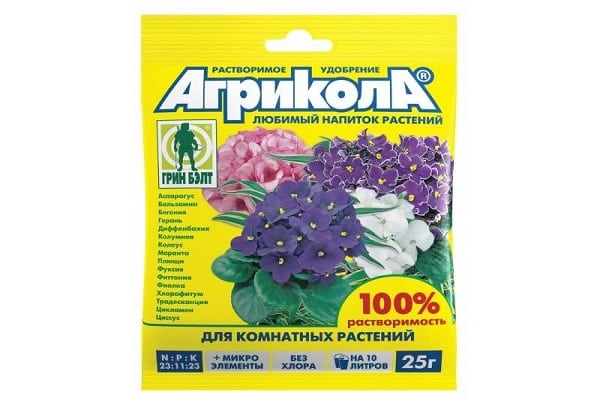
Green fertilizer - green manure is sown on the site in four months. These include oats, white mustard. Then the greens are cut and the stems are buried in the ground. Having rotted, they will fill the soil with useful elements.
Garlic Spring Feeding Recipe
If the leaves of garlic turn yellow, then the beds are treated in spring with nutrient solutions. Here is a recipe for one of them:
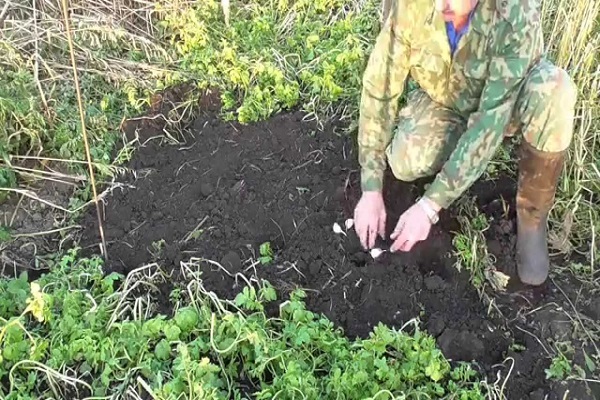
- Twenty liters of water is poured into the barrel, preferably rainwater.
- Diluted in liquid on twelve grams of ammonium nitrate and potassium, twenty - superphosphate.
- Seedlings are watered with liquid fertilizing. The amount of fertilizer is enough for two square meters.
- This procedure is repeated a month later, in June.
Fertilizing on time will allow the vegetable not only to take root, but also to fully develop.

